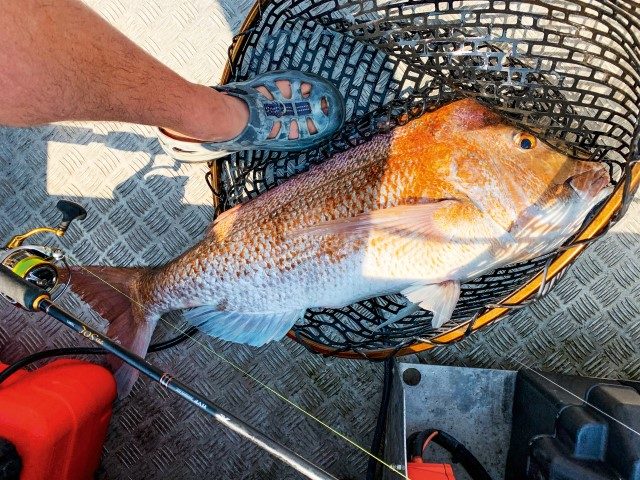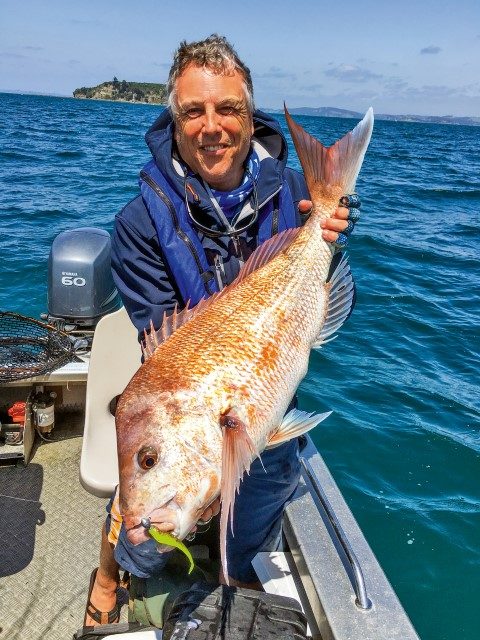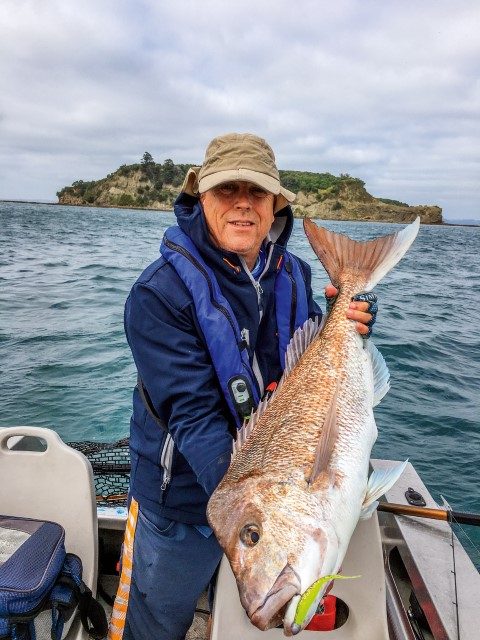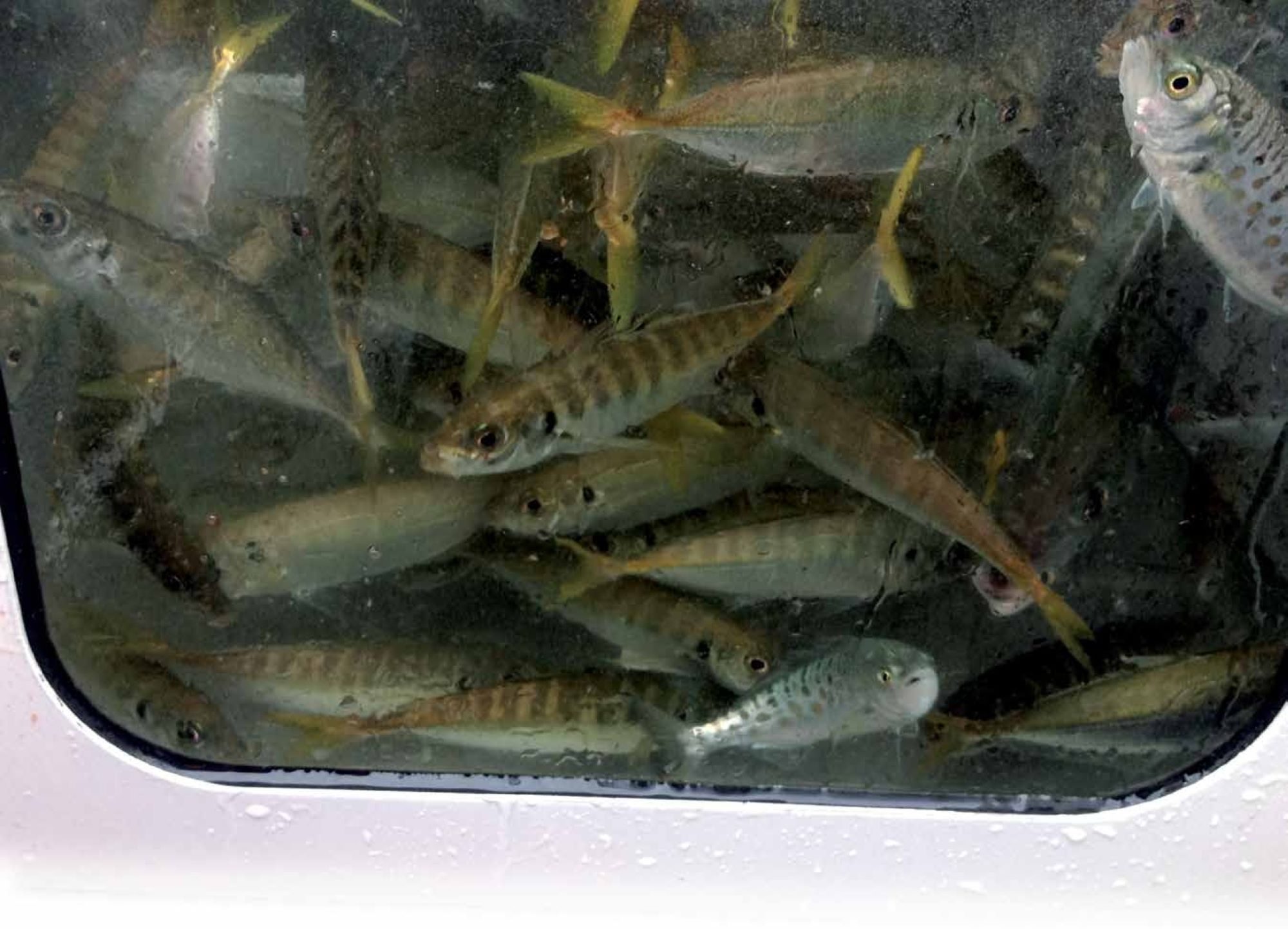

It seems odd to be reminiscing about spring now that summer in all its glory is here. But snapper fishing in spring can be spectacular and I’m missing it!
The venue was my usual for mid-November: the general area between Whangaparaoa Bay and Kawau Island in the Hauraki Gulf, just north of Auckland. It’s a big patch of ocean, but I choose the specific location according to the season, recent fishing reports, the weather and sea conditions on the day.
Fishing from an open 4.5m boat, I seldom venture too far offshore unless conditions are perfect, so I look forward to the few weeks when snapper gather here en masse prior to spawning. It’s easily accessible to small boats and produces some of the best snapper fishing of the year.
The appeal at this time of the year is not so much the sheer number of snapper available, but the possibility of tangling with a few big ones. Migrating snapper descend on this rich feeding area in a full range of adult sizes, from just under legal size to over 10kg in weight.
For most of the year I seldom hook big snapper in local waters – plenty of 1-2kg schoolies during summer and the odd bigger fish from inshore in the colder months, but during October and November I usually snag a few beauties while fishing this area.

On the morning in question, my very first cast with a Z-Man soft plastic resulted in a nice 2kg fish, which I thought might join the family for dinner. However, when I opened the ice box,
I realised I had forgotten to buy ice when I refuelled the boat.
I must have been too distracted by the long wait for coffee!
With a warm day in the offing, I certainly wouldn’t be keeping that fish, but I figured I could possibly get away with keeping a fish or two late in the session. I could always stop for ice on the drive home.
Over the next couple of hours, the wind and tide worked nicely together to carry the boat on long drifts parallel to the coastline in about 20m of water. I caught snapper on most casts, but I was only 30 minutes into the session when I hooked a much bigger fish.
Big snapper often strike at soft plastics quite gently, picking up the lure as it falls or simply stopping it in its tracks during the retrieve. Fish that lift off the bottom to bite soft baits as they drop tend to be larger than those caught retrieving or dragging said bait. I get a shot of adrenalin every time a fish takes my soft bait mid-water, because there’s a good chance it’s a decent one.
A big snapper may not reveal its true size straight away. A bite on the drop sometimes only registers through the line as a slight ‘tick’ or tap, often not even that, only a feeling that something is not quite right. Keeping a close eye on the line as the lure sinks is vital because sometimes the slightest movement in the braid is the only bite indication you’ll get.
That’s what happened this time. My Z-Man was sinking through the water on a moderately tight line. I had already closed the bail to take up any bowed line when the braid suddenly stopped pulling under the surface. Knowing my plastic couldn’t be anywhere near the bottom, I took a couple of quick turns on the reel handle and lifted the rod.
I was rewarded with weight on the line, but I could feel that I didn’t have a direct connection with the fish: it had picked up my bait in midwater and swum away with it, causing a big belly in the line. A few more frantic turns of the reel and then another lift of the rod to properly set the hook resulted in a solid connection, a deep bend in the rod and an impression of considerable weight.

The degree to which snapper fight varies. The big ones can be a little disappointing, especially when they’re taken in deep-ish water over a clear bottom. Some of the hardest battles I’ve experienced were not from really big fish, but from well-conditioned 7-8kg snapper, some of which I initially mistook for kingfish.
However, any snapper over a few kilos is a handful when hooked on soft bait gear in shallow water over foul ground. Snapper always try to get to cover when hooked, but larger specimens rely more on their bulk and an intimate knowledge of the local terrain than on speed, often burying themselves deep in the reef and making their escape by breaking the line.
How each snapper fights depends on a lot of factors: size, water depth, bottom type and especially body condition. Fat pre-spawn fish are tough, while post-spawn fish, not surprisingly, put up much less of a struggle. This fish was somewhere in between: not spawned out, but not in top condition either. I could feel plenty of weight, but not that much power.
As often happens, it took a few seconds for the big snapper to realise it was in trouble. At first it dashed about a bit, making it hard for me to maintain tension on the line, before taking a decent run against a hard-set drag. Several short but powerful diving bursts followed, interspersed with periods of dogged resistance as the fish lay on its side shaking its head – a typical snapper fight. And then it was all over.
All at once the fish glided up from the depths to lie flopping on the surface, almost too big for my net: it took two hands on the net hoop to lift it aboard.

This fish was certainly big, but not in the best condition. An old specimen with a large head, it measured 87cm to the fork of the tail, the longest snapper I’ve caught in some time, if not the heaviest. Keen to get the fish back into the water, I didn’t weigh it, but guessed 10kg at least. In good condition it would have been considerably more.
After that successful release, I caught quite a few more normal-sized fish, none of which was kept since I had no ice, but the pace of the fishing slowed with a tide change and I decided to relocate a short distance away.
By the time I had had set up the boat for a drift over the new area, the tide started to run again. First cast resulted in another pick-up on the drop, followed by a very long, powerful run that had me starting the engine to follow the fish so as not to dump too much line into the water. Kingfish?
Well… this fish had me fooled for a bit, but after a while it settled down and I could feel those typical big snapper thumps through the line. Fairly soon it came to the boat as well, a very fat, shiny, 74cm specimen in prime condition. After a quick snap, it too went back into the water to do its thing for the species.
The very next cast resulted in yet another horse snapper, smaller than the last at 70cm, but also a hard-pulling, shiny male, which like the others was released to fight another day.
At this point, with tired arms and the morning drawing to a close, I was thinking about heading home. But I’d promised myself two quick ‘eating size’ fish before calling it quits. However, an hour later I hadn’t had another bite, so with a tide-dependent boat ramp to contend with, I reluctantly called it quits.
I wasn’t too upset about missing out on a feed though – I’d had an absolute boomer of a morning’s fishing, which I’ll look back on for some time, and all those big fish (and the smaller ones) were still swimming around ready for next time. Bring on spring 2020!




